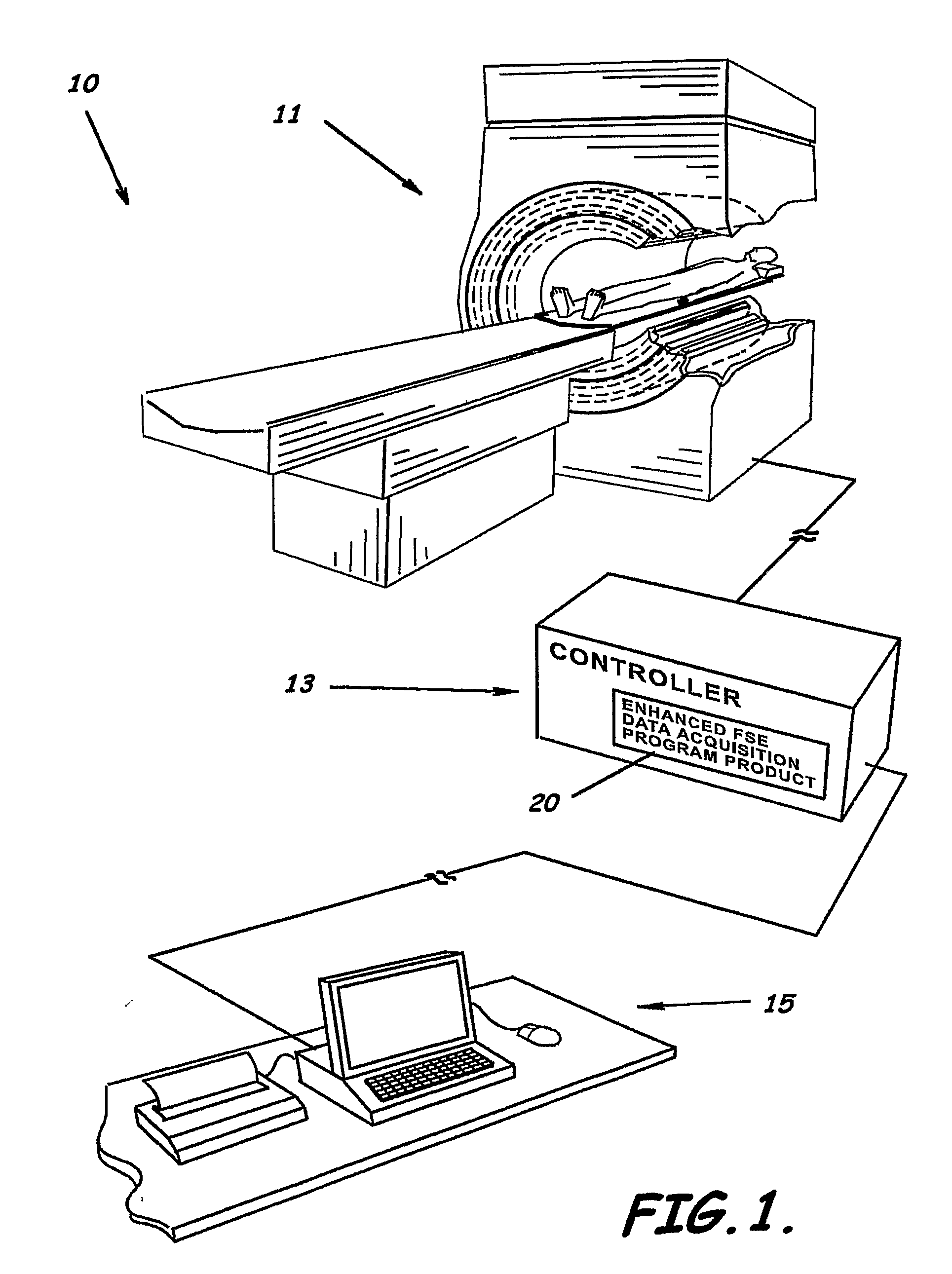System, program product, and method of acquiring and processing MRI data for simultaneous determination of water, fat, and transverse relaxation time constants
a transverse relaxation time constant and data acquisition technology, applied in the field of magnetic resonance imaging and medical industry, can solve the problems of inhomogeneity in the main magnetic field, particularly problematic technique, and relatively low snr, and achieve the effects of less time consuming for determining, improving efficiency and image clarity, and being more accura
- Summary
- Abstract
- Description
- Claims
- Application Information
AI Technical Summary
Benefits of technology
Problems solved by technology
Method used
Image
Examples
Embodiment Construction
[0037]The present invention now will be described more fully hereinafter with reference to the accompanying drawings in which embodiments of the invention are shown. This invention may, however, be embodied in many different forms and should not be construed as limited to the embodiments set forth herein; rather, these embodiments are provided so that this disclosure will be thorough and complete, and will fully convey the scope of the invention to those skilled in the art. Like numbers refer to like elements throughout.
[0038]As illustrated in FIGS. 1 and 3-7, embodiments of methods, program products, and systems according to the present invention can beneficially use a data acquisition technique or method that modifies, for example, the well known FSE pulse sequence. In an MRI system 10, an MRI machine 11, such as shown and as understood by those skilled in the art, includes a primary magnetic field, a radio frequency (RF) field and time varying gradient fields. Such a machine 11 c...
PUM
 Login to View More
Login to View More Abstract
Description
Claims
Application Information
 Login to View More
Login to View More - R&D
- Intellectual Property
- Life Sciences
- Materials
- Tech Scout
- Unparalleled Data Quality
- Higher Quality Content
- 60% Fewer Hallucinations
Browse by: Latest US Patents, China's latest patents, Technical Efficacy Thesaurus, Application Domain, Technology Topic, Popular Technical Reports.
© 2025 PatSnap. All rights reserved.Legal|Privacy policy|Modern Slavery Act Transparency Statement|Sitemap|About US| Contact US: help@patsnap.com



